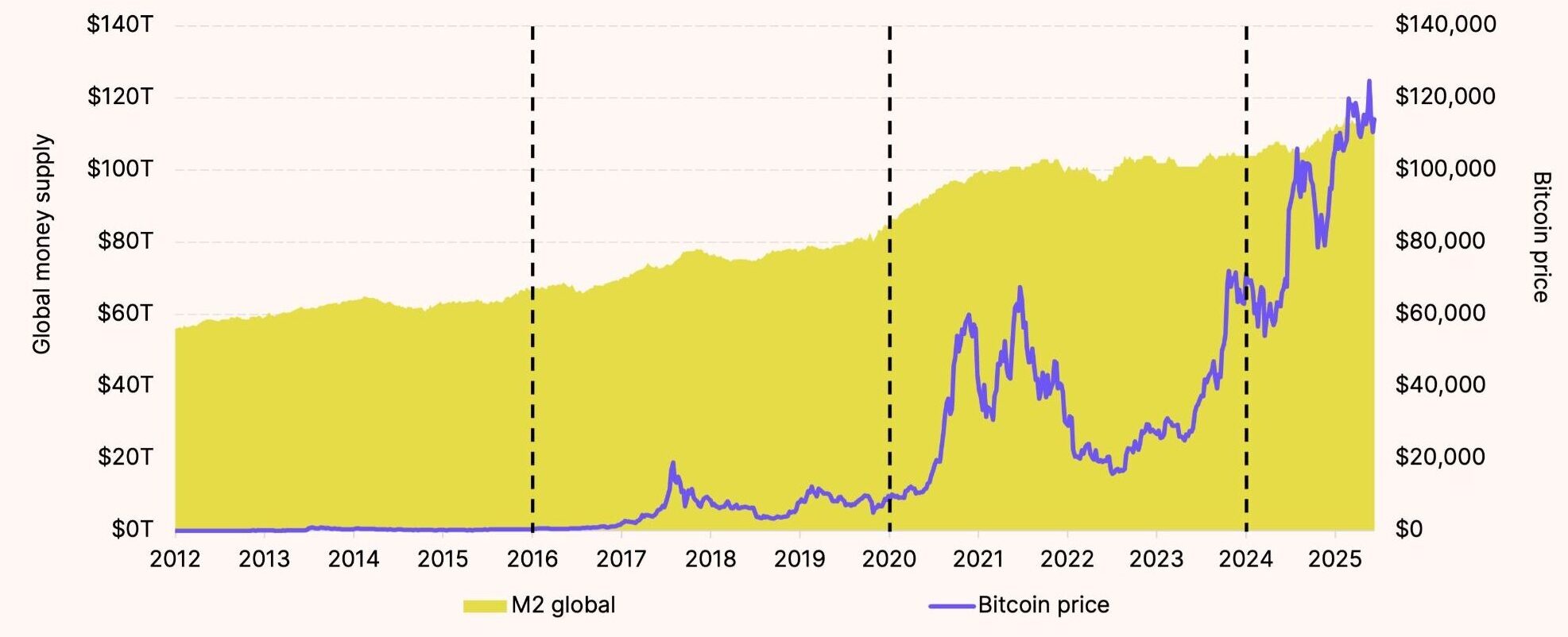For more than a decade, Bitcoin’s price has followed a familiar rhythm. Every four years, a halving event cuts new supply in half, typically triggering a powerful bull run, a sharp correction, and a long recovery, almost like clockwork. As we approach the end of 2025, that rhythm appears to be changing.
Understanding these changes is essential for anyone trying to navigate the next phase of Bitcoin’s evolution, where macroeconomic forces and institutional capital are rewriting the old playbook.
What is Bitcoin’s old playbook?
Historically, each halving sparked a new cycle of growth and decline.
- 2012: Bitcoin rose from 12 to 1'150 USD before dropping 85%
- 2016: From 650 to 20'000 USD, then down 80%
- 2020: From 8'700 to 69'000 USD, followed by a 75% correction
These predictable waves became a roadmap for smart traders. Yet the post-2024 halving period has broken the pattern. Eighteen months after the April 2024 event, Bitcoin remains above 110'000 USD with subdued volatility. Momentum indicators like the monthly relative strength index (RSI) point to controlled rather than euphoric growth. The usual “blow-off top” is missing.

What changed in Bitcoin’s cycle?
The market structure. Bitcoin is no longer dominated by retail speculation. The launch of US spot ETFs in January 2024 opened access to regulated, long-term capital: pension funds, asset managers, and corporate treasuries. These institutional investors tend to hold through volatility rather than react to headlines, resulting in steadier, more persistent demand than the initial retail investor base.
For the first time, Bitcoin hit a new all-time high before a halving. This shift from short-term trading to institutional demand has smoothed out the once-violent price swings.
Halvings matter less, macro matters more
Earlier halvings sharply reduced Bitcoin’s inflation rate, reinforcing its scarcity. But in 2024, supply growth only fell from roughly 1.7% to 0.85%. With nearly 94% of total Bitcoin already mined, the supply effect is now marginal.
Meanwhile, macro forces have taken the wheel. Bitcoin fell with equities during the 2022 rate-hike cycle and rallied as global liquidity improved between 2023 and 2025. With rates now declining and quantitative tightening ending, liquidity conditions remain supportive. Bitcoin increasingly trades like a macro asset sensitive to real yields, liquidity flows, and risk appetite.

The takeaway? Bitcoin’s market structure is evolving
Some analysts now argue that Bitcoin’s four-year cycle is stretching to five as liquidity waves lengthen and institutional participation deepens. Post-halving gains of just 18% so far may signal a slower but more sustainable uptrend, with the peak potentially extending into 2026.
The halving still holds psychological weight, but its influence is fading amid stronger macro and liquidity dynamics. The familiar boom-and-bust pattern may be giving way to a new era, one defined by steadier growth, institutional maturity, and global macro trends rather than retail euphoria.








